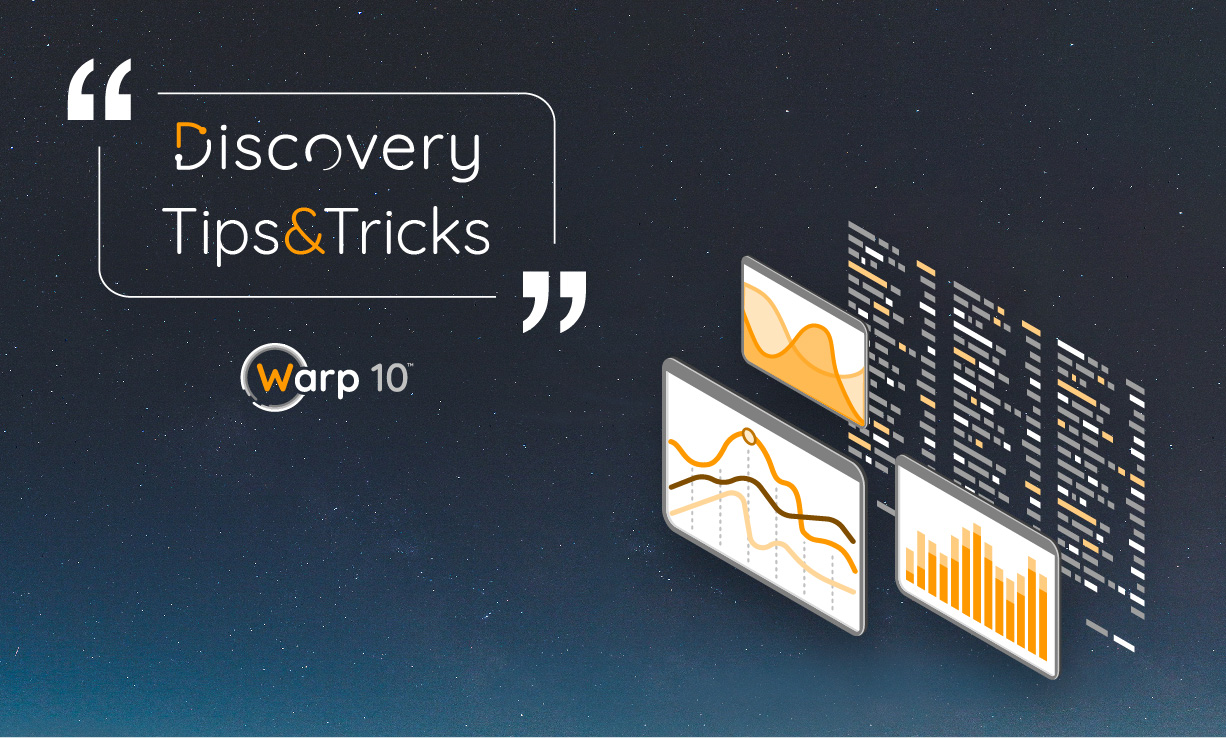Here is a simple way to reproduce the Plot dataview of WarpStudio in a Discovery dashboard.

If you are new to Discovery, read this page before this article.
Principles
The WarpStudio's plot view is composed of 3 charts: annotation, line, and map.
In this article, I will cover only annotation and line. Both charts share their time bounds in order to compute the overall timespan. The line chart sends its left margin to the annotation chart.
| Discovery Tips&Tricks #1: synchronize zoom and focus Discovery Tips&Tricks #3: Build a form Discovery Tips&Tricks #4: Production-ready! |
The easiest way to achieve synchronization of bounds and annotations' left margin is to use special events:
For time bounds:
{ 'tags' [ 'chart1' ] 'type' 'bounds' }And for the left margin:
{ 'tags' [ 'chart1' ] 'type' 'margin' }For this sample, we generate random GTS. The reference timestamp, is passed as a variable.
Dashboard definition
At first, we have to define a gts variable that holds our random GTS list.
NOW 'now' STORE
{
'title' 'My Plot'
'cellHeight' 90
'vars' { 'now' $now }
'tiles' [ ]
}| From datasets to dashboard: Covid Tracker built with Warp 10 and Discovery |
Tiles definition
A first tile will emit events for the second and listen to events coming from the other one:
{
'x' 0 'y' 0 'w' 12 'h' 1
'type' 'annotation'
'options' {
'eventHandler' 'type=(bounds|zoom|focus|margin),tag=chart1' // listen at events on a channel called chart1
}
'macro' <%
// random GTS
NEWGTS 'g' STORE
1 10 <% 'i' STORE $g [ $now $i STU * - T ] ADDVALUE DROP %> FOR
{
'data' $g
'events' [
{ 'tags' [ 'chart2' ] 'type' 'zoom' } // emits its zoom level
{ 'tags' [ 'chart2' ] 'type' 'focus' } // emits its focus timestamp
]
}
%>
}Same principle for the second tile:
{
'x' 0 'y' 1 'w' 12 'h' 4
'type' 'line'
'options' {
'eventHandler' 'type=(zoom|focus),tag=chart2' // listen at events on a channel called chart2
}
'macro' <%
// random GTS
NEWGTS 'g' STORE
-5 15 <% 'i' STORE $g [ $now $i STU * - RAND ] ADDVALUE DROP %> FOR
{
'data' $g
'events' [
{ 'tags' [ 'chart1' ] 'type' 'zoom' } // emits its zoom level
{ 'tags' [ 'chart1' ] 'type' 'focus' } // emits its focus timestamp
{ 'tags' [ 'chart1' ] 'type' 'margin' } // emits its left margin
{ 'tags' [ 'chart1' ] 'type' 'bounds' } // emits its time bounds
]
}
%>
}All together: https://snapshot.senx.io/0005de432b9123cc-0-7-7837be775b314364
Used WarpScript functions
NEWGTS, STU, RAND, ADDVALUE, FOR
The result
Discover more articles and tutorials about Discovery.
| → Discovery Tips&Tricks #3: Build a form |
Read more
Discovery Tips&Tricks #1 - Synchronization of zoom and focus between charts
Warp 10 Docker Image - Next Generation
WarpStudio v2: What's new in our Web IDE?

Senior Software Engineer